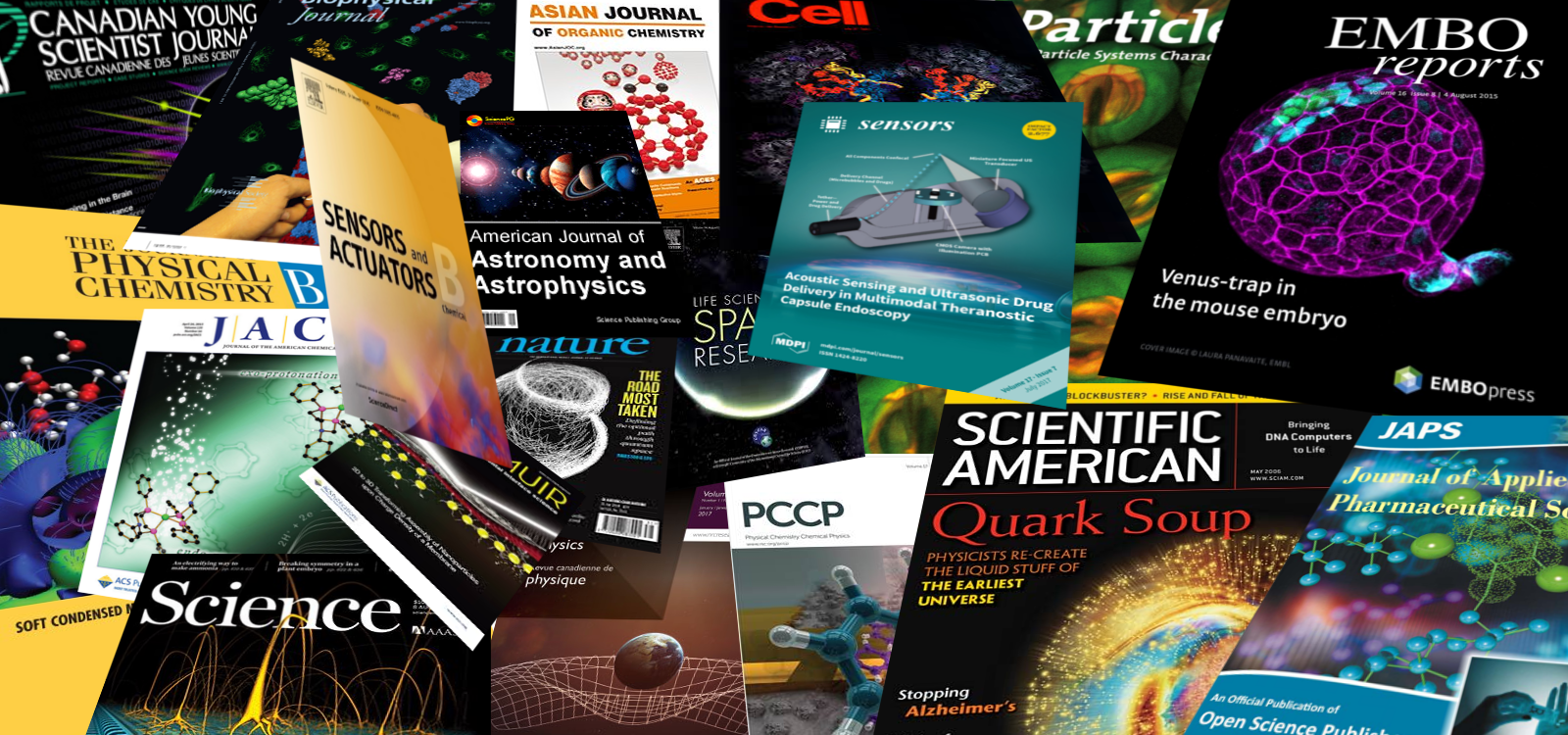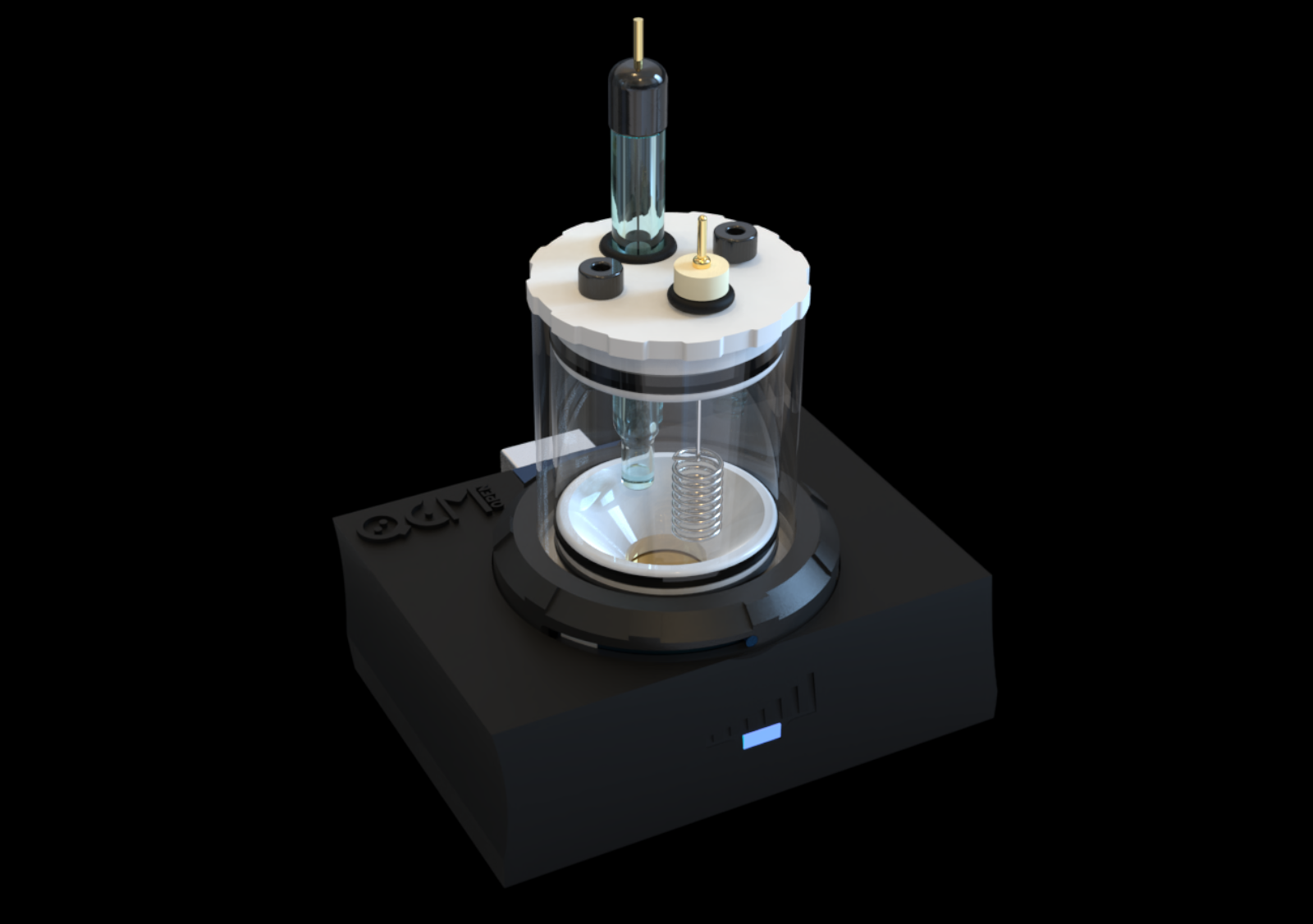openQCM – Powered by Novaetech S.r.l

Scientific Papers
Publications citing the applications of openQCM (by Novaetech S.r.l.) instruments and accessories in scientific research.
The list of scientific papers published on the most important journals showing the usage of openQCM in several scientific fields, such as thin film deposition, chemical sensors, biological research and biosensors.
Because of the large number of publications, we are reorganizing everything by subject areas. This will take some time. Thank you for your patience
2025
Hudzik, Emilia M.; Parnell, Andrew J.; Petkov, Jordan; Geoghegan, Mark
Quartz crystal microbalance experiments reveal structural changes in the Staphylococcus aureus biofilm in the presence of savirin Journal Article
In: Results in Surfaces and Interfaces, pp. 100535, 2025, ISSN: 2666-8459.
Abstract | Links | BibTeX | Tags: Biofilm, openQCM NEXT, QCM-D, quartz-crystal microbalance, Quorum sensing inhibitor, Staphylococcus aureus
@article{HUDZIK2025100535,
title = {Quartz crystal microbalance experiments reveal structural changes in the Staphylococcus aureus biofilm in the presence of savirin},
author = {Emilia M. Hudzik and Andrew J. Parnell and Jordan Petkov and Mark Geoghegan},
url = {https://www.sciencedirect.com/science/article/pii/S2666845925001229},
doi = {https://doi.org/10.1016/j.rsurfi.2025.100535},
issn = {2666-8459},
year = {2025},
date = {2025-04-21},
urldate = {2025-01-01},
journal = {Results in Surfaces and Interfaces},
pages = {100535},
abstract = {ABSTRACT
Quartz-crystal microbalance with dissipation (QCM-D) experiments show that green-fluorescent protein labelled Staphylococcus aureus adsorption to a gold QCM electrode is similar for a certain incubation period (here, 6 h) in the presence and absence of the quorum sensing inhibitor, savirin. After this period, cells continue to adsorb in the absence of savirin, but in its presence biofilm formation is severely compromised, with significant changes in the viscoelastic properties of the layer being observed.},
keywords = {Biofilm, openQCM NEXT, QCM-D, quartz-crystal microbalance, Quorum sensing inhibitor, Staphylococcus aureus},
pubstate = {published},
tppubtype = {article}
}
ABSTRACT
Quartz-crystal microbalance with dissipation (QCM-D) experiments show that green-fluorescent protein labelled Staphylococcus aureus adsorption to a gold QCM electrode is similar for a certain incubation period (here, 6 h) in the presence and absence of the quorum sensing inhibitor, savirin. After this period, cells continue to adsorb in the absence of savirin, but in its presence biofilm formation is severely compromised, with significant changes in the viscoelastic properties of the layer being observed.
Quartz-crystal microbalance with dissipation (QCM-D) experiments show that green-fluorescent protein labelled Staphylococcus aureus adsorption to a gold QCM electrode is similar for a certain incubation period (here, 6 h) in the presence and absence of the quorum sensing inhibitor, savirin. After this period, cells continue to adsorb in the absence of savirin, but in its presence biofilm formation is severely compromised, with significant changes in the viscoelastic properties of the layer being observed.
Obořilová, Radka; Kučerová, Eliška; Botka, Tibor; Vaisocherová-Lísalová, Hana; Skládal, Petr; Farka, Zdeněk
Piezoelectric biosensor with dissipation monitoring enables the analysis of bacterial lytic agent activity Journal Article
In: Nature - Scientific Reports, vol. 15, no. 1, pp. 3419, 2025, ISSN: 2045-2322.
Abstract | Links | BibTeX | Tags: Antimicrobial treatment, Bacteriophages, biosensors, Multidrug-resistant bacteria, openQCM Q-1, Phage therapy, Phage-antibiotic synergy, Piezoelectric biosensor, QCM, QCM-D, Quartz Crystal Microbalance, Staphylococcus aureus
@article{Obořilová2025,
title = {Piezoelectric biosensor with dissipation monitoring enables the analysis of bacterial lytic agent activity},
author = {Radka Obořilová and Eliška Kučerová and Tibor Botka and Hana Vaisocherová-Lísalová and Petr Skládal and Zdeněk Farka},
url = {https://doi.org/10.1038/s41598-024-85064-x},
doi = {10.1038/s41598-024-85064-x},
issn = {2045-2322},
year = {2025},
date = {2025-01-27},
urldate = {2025-01-27},
journal = {Nature - Scientific Reports},
volume = {15},
number = {1},
pages = {3419},
abstract = {Antibiotic-resistant strains of Staphylococcus aureus pose a significant threat in healthcare, demanding urgent therapeutic solutions. Combining bacteriophages with conventional antibiotics, an innovative approach termed phage-antibiotic synergy, presents a promising treatment avenue. However, to enable new treatment strategies, there is a pressing need for methods to assess their efficacy reliably and rapidly. Here, we introduce a novel approach for real-time monitoring of pathogen lysis dynamics employing the piezoelectric quartz crystal microbalance (QCM) with dissipation (QCM-D) technique. The sensor, a QCM chip modified with the bacterium S. aureus RN4220 ΔtarM, was utilized to monitor the activity of the enzyme lysostaphin and the phage P68 as model lytic agents. Unlike conventional QCM solely measuring resonance frequency changes, our study demonstrates that dissipation monitoring enables differentiation of bacterial growth and lysis caused by cell-attached lytic agents. Compared to reference turbidimetry measurements, our results reveal distinct alterations in the growth curve of the bacteria adhered to the sensor, characterized by a delayed lag phase. Furthermore, the dissipation signal analysis facilitated the precise real-time monitoring of phage-mediated lysis. Finally, the QCM-D biosensor was employed to evaluate the synergistic effect of subinhibitory concentrations of the antibiotic amoxicillin with the bacteriophage P68, enabling monitoring of the lysis of P68-resistant wild-type strain S. aureus RN4220. Our findings suggest that this synergy also impedes the formation of bacterial aggregates, the precursors of biofilm formation. Overall, this method brings new insights into phage-antibiotic synergy, underpinning it as a promising strategy against antibiotic-resistant bacterial strains with broad implications for treatment and prevention.},
keywords = {Antimicrobial treatment, Bacteriophages, biosensors, Multidrug-resistant bacteria, openQCM Q-1, Phage therapy, Phage-antibiotic synergy, Piezoelectric biosensor, QCM, QCM-D, Quartz Crystal Microbalance, Staphylococcus aureus},
pubstate = {published},
tppubtype = {article}
}
Antibiotic-resistant strains of Staphylococcus aureus pose a significant threat in healthcare, demanding urgent therapeutic solutions. Combining bacteriophages with conventional antibiotics, an innovative approach termed phage-antibiotic synergy, presents a promising treatment avenue. However, to enable new treatment strategies, there is a pressing need for methods to assess their efficacy reliably and rapidly. Here, we introduce a novel approach for real-time monitoring of pathogen lysis dynamics employing the piezoelectric quartz crystal microbalance (QCM) with dissipation (QCM-D) technique. The sensor, a QCM chip modified with the bacterium S. aureus RN4220 ΔtarM, was utilized to monitor the activity of the enzyme lysostaphin and the phage P68 as model lytic agents. Unlike conventional QCM solely measuring resonance frequency changes, our study demonstrates that dissipation monitoring enables differentiation of bacterial growth and lysis caused by cell-attached lytic agents. Compared to reference turbidimetry measurements, our results reveal distinct alterations in the growth curve of the bacteria adhered to the sensor, characterized by a delayed lag phase. Furthermore, the dissipation signal analysis facilitated the precise real-time monitoring of phage-mediated lysis. Finally, the QCM-D biosensor was employed to evaluate the synergistic effect of subinhibitory concentrations of the antibiotic amoxicillin with the bacteriophage P68, enabling monitoring of the lysis of P68-resistant wild-type strain S. aureus RN4220. Our findings suggest that this synergy also impedes the formation of bacterial aggregates, the precursors of biofilm formation. Overall, this method brings new insights into phage-antibiotic synergy, underpinning it as a promising strategy against antibiotic-resistant bacterial strains with broad implications for treatment and prevention.

